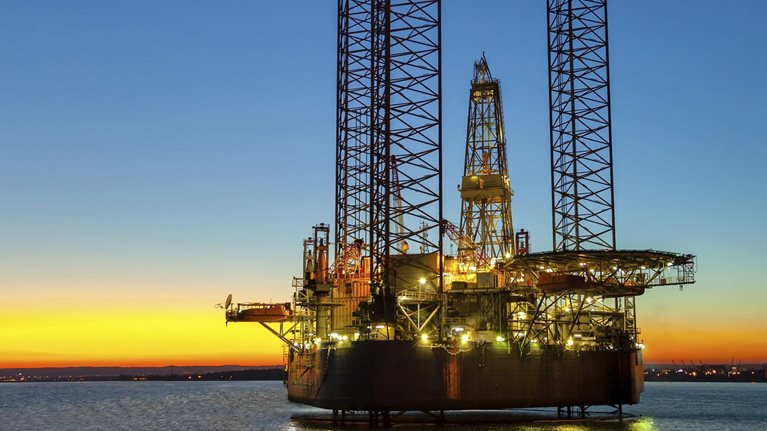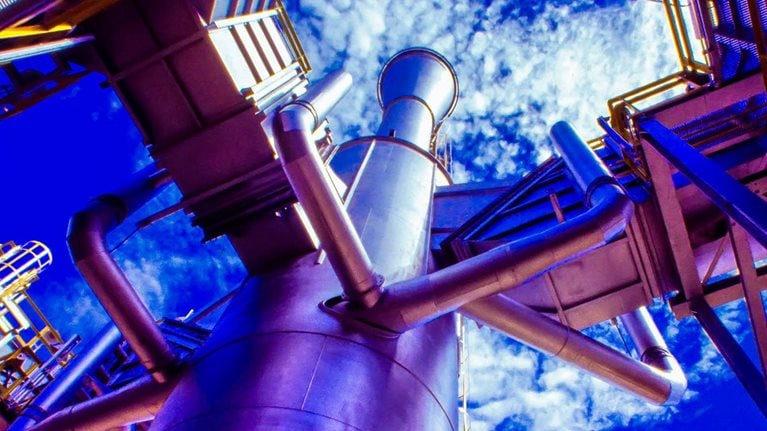Pioneer Natural Resources has shifted its portfolio from mature conventional assets to fast-growing tight oil development, assuming a leading position among the large-cap independents that are shaping the industry. This shift in emphasis is reflective of the rapid transformation occurring in the North American onshore oil and gas industry.
Headquartered near Dallas, Pioneer has focused its growth strategy on the Eagle Ford Shale and the Midland Basin, where it originated as a Permian operator. Timothy L. Dove joined Parker & Parsley (a predecessor to Pioneer) in 1994 in a business development role and later served as CFO. He has served as President and COO since 2004—basically the duration of the unconventional resource boom in onshore North America.
In this interview with McKinsey’s Claudio Brasca and Joe Quoyeser, Dove shares his perspective on leading in uncertain times and on the importance he places on developing a talent pool for the future as among the key success factors for profitable growth in this new resource base.
This is the first in a recurring series of discussions with basin leaders in North America.
McKinsey: How did tight oil from fractured horizontal wells come to be the future of Pioneer?
Tim Dove: It started for us in the Edwards Trend in South Texas. We began drilling horizontal gas wells there in the early 2000s. Most of those wells were simply acidized, not fracture stimulated. To drill an Edwards well, you drilled vertically through the Eagle Ford Shale, and all of the wells had hydrocarbon shows in that zone.
So we knew as early as anyone that the Eagle Ford was going to be a place to which we would return. The Edwards trend exploration/development campaign required 3-D seismic technology—which we had—and that was a huge advantage from a data standpoint because we could pinpoint the sweet spots. We became pretty excited about it, so we leased 300,000 gross acres.
We were active and aggressive in leasing in Eagle Ford [a shale region in southern Texas] and have created significant value. We also have 800,000 acres in the Permian Basin in West Texas, mostly held by production, and with a very low-cost basis from our heritage as Parker and Parsley. [Parker and Parsley Petroleum Company merged with MESA Inc. in 1997 to form Pioneer Natural Resources.]
McKinsey: What are the key challenges in developing the tight oil resource in the Permian Basin?
Tim Dove: We think of it in terms of scale, logistics, financing and people. Regarding scale, what’s needed in the Permian Basin today is an occupation in the military sense. You can occupy space if you dominate the land position. For that, you have to be able to plan well ahead. Our acreage allows us to think big and go about it unlike anyone else. One really important aspect of a large, contiguous held by production (HBP) position is the ability to drill long laterals. There is a strong positive correlation between lateral length and well productivity.
The logistics of a horizontal campaign are infinitely more difficult than for conventional vertical wells. We are dealing with enormous amounts of sand—10 million pounds per well or more—and massive amounts of water, too. I like to say that in the Midland Basin we’re building the biggest water project since the Roman aqueducts. In conventional operations, water is a nuisance issue. In shale, it is mission critical, and we have many of our best leaders working on it.
Regarding finance, we have 20,000 prospective horizontal drilling locations on the map today. If they average $8 million per well all-in, we need $160 billion to develop the project fully. The immensity of the capital required means we have a long-term issue that needs to be considered thoughtfully. It is a non-trivial challenge for a $20 billion company to raise $160 billion.
There is always tension as to whether we can drill fast enough to bring the present value forward in a manner that satisfies our investors, realizing that the only thing we are limited by is boots on the ground. So I spend a large part of my time on people: Do we have the right talent working on the right issues? Do we have enough people resources to execute effectively?
McKinsey: What have you learned about the relative importance of acreage quality—sweet spots—versus efficiency of execution?
Tim Dove: When all the smoke clears, what we want to measure is the goodness of the well. We can measure every KPI in the world—how fast we can drill the wells, total well cost, cycle time—but none of that matters if you’ve drilled a lousy well. If we drill fast, but 50 percent of the well is out of the zone, who cares? It’s a bad well. You cannot execute and make money on bad rock unless commodity prices bail you out.
That said, once your acreage is on the map, the only way to make a lot of money is to be excellent at execution. And that is where scale is a tremendous advantage for us. It has to do with our acreage position and with the fact that Pioneer is the largest employer among the biggest operators in Midland. We also have a lot of our own vertically integrated service businesses to help us control costs.
We think like farmers. We do not control the price of our commodity, but we can use derivatives to manage price risk. What we can control is our costs, and how we execute. That is what an independent can do probably better than a major.
McKinsey: What have you accomplished on costs in the downturn, and how sustainable will the improvements be when oil prices rebound?
Tim Dove: We are down about 30 percent in drilling and completion costs compared to 2014. Half of that is due to lower service costs, and half of it is things we achieved through internal efficiency improvements that we expect to persist. But even the half that is due to service pricing we feel pretty good about sustaining. There is a huge amount of slack service equipment that is waiting to be put back to work. The big public service companies acknowledge it will be a while before they can achieve any pricing power again.
McKinsey: How is it that the independents have come to be leading innovators in resource plays? What role do service companies play?
Tim Dove: The service companies are still very relevant when it comes to R&D. But what has happened is that we have become their laboratories. Some of the big companies will work with us in a kind of JV model to run new tools in our wells, new techniques, and new fluids. It is a symbiotic relationship; that did not happen in the past, but it is happening now in response to the need for shale technologies.
That said, the service companies have big marketing machines, and they have a form of the razor blade problem where they have little incentive to do anything that does not allow them to sell more and more of the same thing.
So companies like ours invest in our own innovation in areas where we have problems. An example is our frac fleets that have old metallurgy. Because we are pumping so much higher volumes of sand and fluids, we have fatigue fracture issues. So we are developing new metallurgy solutions with the Department of Energy’s National Labs. We do that on many fronts.
McKinsey: What performance improvement accomplishments stand out for you?
Tim Dove: On the well-productivity side, we made a serious effort to improve completion efficiency in the Eagle Ford. Specifically, more proppant, more fluids, and changing the spacing configuration vis-à-vis the clusters and the perforations. We achieved an estimated ultimate recovery improvement of 15 percent to 30 percent per well. Then we had that same team do the work in the Permian where we were able to make similar improvements more quickly.
On the cost side, we’ve made improvements in both design and execution. Going from three strings of casing to two delivered huge savings, not only in the costs of tubulars and cement but also in rig time that would have been spent running pipe and cementing.
Regarding execution, simultaneous completion operations on multi-well pads have delivered huge benefits. We have cut D&C operations into small subsets of time and activities and determined how fast we should be able to complete any of those activities. We call the result the Frankencurve, representing the fastest drilling curve that is currently technically achievable, and then we try to achieve that on a repeatable basis.
McKinsey: Has it been as easy for the industry to crack the code on well productivity in Permian as in Eagle Ford or Bakken?
Tim Dove: The Permian is a different animal. We have a huge area. By itself, the Midland Basin is 7 percent larger than the state of Massachusetts. When you consider that size, and add the fact we have 3,500 to 4,000 feet of shales depending on where you are, and that there are up to 12 target zones, you begin to understand the nature of the problem.
This is a massive challenge, and it will be a long time before we are at the point where we can say, “We pretty much have this figured out.” That is, what to do in each zone; how to complete the well in that zone; and how to look at spacing and offset drilling from other zones and the same zone.
What is exciting is the impact we can have if we can increase the recovery rates. In many parts of our acreage, there are 25 to 50 million barrels of oil per square mile. But recovery rates may be 10 percent or less. The size of the prize is so immense that this will be something that has the attention of the industry and all of its participants for a long time.
McKinsey: The commodity market has created very strong headwinds in 2015. What is your outlook for the market?
Tim Dove: I believe this is the sixth downturn of my career. They have all had different causes than the one we are in today. Think back to the financial crisis of 2008–2009. That led to slowing economies and slowing demand, which impacted our business pretty heavily. But it was an extreme V-shaped recovery because we went from $149 to $35 back to $60 in a short time. From 1986 into the 1990s was an extremely long L-shaped recovery. It took years and years to create demand to absorb the world’s excess supply.
The current environment feels like a semi-extended L, but not very long. It depends on how you calculate current oversupply; how you factor in Iran; how you figure demand will increase. The market is certainly incentivizing demand with these low prices. I believe it will be a relatively short-term phenomenon. It’s more of an L than I wish it were, but I think we’ll emerge from this before too long with significantly better pricing.
McKinsey: Hedging is an important part of the Pioneer model. How do you think about it?
Tim Dove: During that period of 2008 and 2009, our stock took a beating, mostly because we had very little in the way of hedges. And like many companies today, the big question asked by investors was about survival: liquidity and covenants and such. We were getting those questions in 2008 and 2009, and they were no fun, I promise you. If investors are asking about survival, then we have issues. And so the stock was crushed as a result.
Our executive team looked at the situation and said, “Wow, we cannot put ourselves in a position where we cannot predict prices and are not protecting ourselves.” We saw other producers had done a great job of hedging out two to three years at all times. And we said, “That is what we want to do.”
Over the last two years, that’s worked for us to the tune of about $1.6 billion of value. So it’s been a huge benefit in this downturn.
McKinsey: Are you laying people off in the downturn?
Tim Dove: I am more focused on trying to build our organization and talent than on cutting overhead costs.
It used to be that Exxon had these big training programs, and we could compete by employing their people after training. Now we and other large independents train the people, and competitors steal them from us, especially those backed by private equity.
So we are not putting a stop to hiring in the downturn, especially of students coming out of college. This downturn is not going to last forever, so we should keep all our internship programs going and continue making new hires—maybe not quite at the same rate, but that’s just because we see less attrition.
We look at developing talent as a funnel; we will still fill the funnel. And we need to keep as many falling through to the bottom of the funnel as we can to be prepared for the future.
G&A costs catch a lot of attention, but if you look at the gross dollars we spend in capital and operating expense, it just dwarfs G&A. Not to say that as leaders of this company we should not be focused on G&A; we should. But we also realize that the multiplicative benefits come from making better wells and reducing our drilling and completion costs. That is where we make money.
The last thing we want when we have $75 oil again is to say, “Why did we let all these top notch technical people go when it was so painstaking to get them here?”
We operate to prepare for success in the future. Of course, we want to control costs, but we need to emerge better as a company when we come out of the downturn, and the only way to do that is with our people.
There is a silver lining in this downturn. At lower activity levels, we have the time to figure out what we can do to improve operations. In our case, it is not about cutting people.
McKinsey: What is your leadership approach to a young workforce?
Tim Dove: We need to mentor these young people, bring them up as fast as we can, and take risks with them. We have no choice. If they are as good as we think they are, they will succeed. That requires giving them hard technical problems, giving them the resources to solve them, and getting out of the way.
We are like a high-tech company. We ask these engineers and geoscientists to solve hard technical problems. We should not be getting in the way. We have to let them go off in their flip-flops and shorts and report back when they have solved the problem. I think we do a good job of that. (But we do not actually wear flip flops and shorts, except shorts on Fridays in the summer.)
McKinsey: Finally, what do you think are the fundamental qualities of Pioneer that will assure its continued success?
Tim Dove: There is a huge advantage from being nimble, being able to go to the top and get decisions made and move things ahead. I believe we are in a sweet spot regarding size. When you get too small, you have one-armed paper hangers (that is, frantically busy people) everywhere. It is just hard to get everything done.
We are big compared with many Permian pure players, but the fundamental roots of the company, from a management standpoint, come from smaller, family-oriented environments. I think there is a huge advantage there.
We work every day to minimize bureaucracy. We are heading much more toward a process-oriented company in the Permian. We have to; we are in a manufacturing business. But we still want to be a company where people can have direct, meaningful conversations with senior management whenever they want to.
Our onboarding process here contributes to our success. If you do not get the culture, you will feel ostracized pretty fast. Not by me; you just will not feel like you are part of things. But when it works, when we take people out of the majors and put them into an entrepreneurial, independent environment, we make monsters out of them—and I mean that in the most positive sense.
So we have to be adaptive. When times are good, we execute well and drill more holes. When times are bad, we get costs down and reduce the activity level to where it needs to be. There are going be more ups and downs, so it is a vital capability to be adaptive and nimble. And that is one thing that worries me; I want us to be nimble always, but it gets more difficult as the company grows.
The last thing—and this is critical—is that our organization and culture are fully aligned with the resource we are developing. We have 20,000 wells to drill. Not every one of them has to be perfect. We can afford to learn on the fly. If we screw up a well, sorry; it happens. But it is one well, and we move on and try to apply our learnings to the next well.
McKinsey: Final thoughts?
Tim Dove: There is a quote widely attributed to Churchill that says: “Success is the ability to go from failure to failure without losing your enthusiasm.” I can assure you we have a lot of enthusiasm here at Pioneer.


